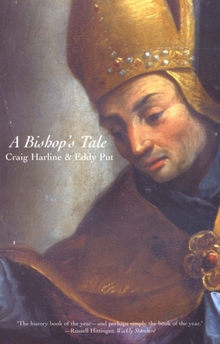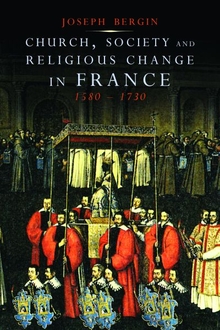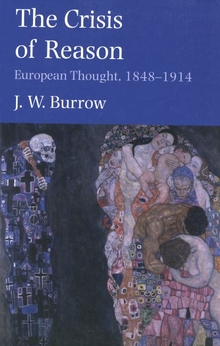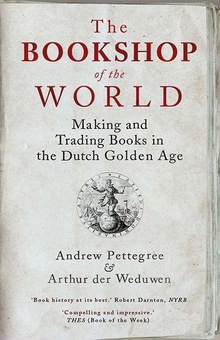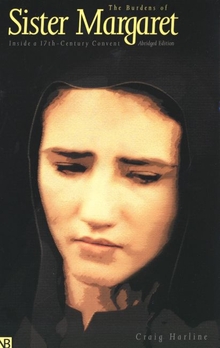A Bishop's Tale
WARNING
You are viewing an older version of the Yalebooks website. Please visit out new website with more updated information and a better user experience: https://www.yalebooks.com
Mathias Hovius Among His Flock in Seventeenth-Century Flanders
Craig Harline and Eddy Put
This absorbing book takes us back to the busy, colorful world of a Netherlandish Catholic bishop and his flock during the age of Reformation. It is drawn from a rare journal, one of many kept by Mathias Hovius from 1596 to 1620 while he was Archbishop of Mechelen (part of modern Belgium). Elegantly written, the book focuses not only on the life of Mathias Hovius but also on key events and characters of his time; it portrays “lived religion,” so that we see people from all sides getting involved in the constant negotiation of what it meant to be a good Catholic.
Craig Harline and Eddy Put recreate the eventful life and times of Mathias Hovius—a world in which other-believers were outright heretics, the nagging fevers of old age were the result of unbalanced bodily humors, and a corruptible earth rested motionless at the center of the universe while God sat exalted on a throne just beyond the fixed stars. The authors also tell the stories of monks, nuns, priests, millers, pilgrims, peasant women, saints, town and village councils, and ordinary parishioners; each story, fascinating in its own right, illustrates a major theme in the history of the Catholic Reformation. In the end Harline and Put have painted a picture teeming with life and energy.
Craig Harline and Eddy Put recreate the eventful life and times of Mathias Hovius—a world in which other-believers were outright heretics, the nagging fevers of old age were the result of unbalanced bodily humors, and a corruptible earth rested motionless at the center of the universe while God sat exalted on a throne just beyond the fixed stars. The authors also tell the stories of monks, nuns, priests, millers, pilgrims, peasant women, saints, town and village councils, and ordinary parishioners; each story, fascinating in its own right, illustrates a major theme in the history of the Catholic Reformation. In the end Harline and Put have painted a picture teeming with life and energy.
Craig Harline is professor of history at Brigham Young University. Eddy Put is senior assistant at the Belgian National Archives and lecturer at the Catholic University of Louvain.
"An elegantly written and absorbing microhistory that reads very much like a good novel. It brings to mind Natalie Zemon Davis’s masterpiece The Return of Martin Guerre and Carlo Ginzburg’s The Cheese and the Worms.”—Carlos M. N. Eire, Yale University
"The authors’ approach, using the Archbishop’s journal to access the late Reformation, yields an understanding of ’ordinary’ Catholicism through the words of a bishop who rubbed shoulders with all of society. Their fast-paced narrative restores biography to its rightful place among the historical disciplines, and makes history fun to read."—Carter Lindberg, Boston University School of Theology
"This most amazing book since Johan Huizinga’s Waning of the Middle Ages depicts the fading of medieval Flanders and the emergence of a revitalized Catholicism—through the sharp eyes of its first Counter-Reformation Archbishop, Mathias Hovius. More than any modern social history has been able to achieve, Hovius’ newly discovered diary transforms the reader into a contemporary, who alternately shivers from the penetrating cold, smells the manure heaped in the streets, celebrates Corpus Christi, or fears God as much as the Plague, the Devil, and Hell. No other study provides an equally reliable, true-to-life and total history of the early modern Low Countries, seeking their own path and voice between Catholic Spain and the Dutch Republic."—Heiko A. Oberman, The University of Arizona
“An extraordinary work of historical biography. It would be difficult to overstate the pleasures of this book. Its historical method is usually accessible and sophisticated. . . . Its style is straightforward and novelistic, with a wealth of detail. . . . Even individual sentences often display a stunning, wide-angled perspective on individual events. . . . And its characters—monks, nuns, millers, peasants, saints, who incidentally illustrate major themes of the Reformation—are vital and ribald and doomed and striving. . . . A very rich book about Reformation Christianity.”—Michael Joseph Gross, Amazon.com (2000 Editor’s Choice)
“[A] lively and engaging book. . . . No other book which I am aware takes one so immediately into the life of a seventeenth-century bishop or the world of early modern ecclesiastical politics and administration. It is accessible and lively enough to be assigned in undergraduate courses. . . . An eminently readable book.”—Philip Benedict, American Historical Review
“Without a doubt this is the best book I’ve ever read on such a topic. It reads like a novel. The authors have that rare ability to bring images alive. In fact everything is true to life: the archdukes, the nuncios, the nuns, the soldiers, the ordinary people, the canons, the pastors, and so forth. The reader truly has the sense that he is burrowed into that world. Moreover, the authors are able to lay bare this difficult world without resorting to flights of romanticism, relying instead on their truly staggering knowledge of the time. It is also history without prejudice, which is no simple matter given the polarized world of which they write. Finally, the authors work hard to see the world of their star as he saw it, yet do not succumb to easy hagiography. It’s a beautiful achievement! . . . In its genre it is a unique event.”—Dr. E. De Maesschalck, Canvas Television (Belgium)
“This book gives a remarkably full and detailed picture of the Catholic Church in a time of radical change. . . . This is a considerable work of historical imagination and scholarly research, whereby a whole world has been reconstructed and made accessible, and understandable. . . . It is elegantly written, beautifully made, and will be of use to the student of the period, just as it is engrossing for the general reader.”—André Gushurst-More, Catholic Herald
“Harline and Put have mined the daybook of Mathias Hovius, archbishop of Mechelen in the Spanish Netherlands, and recreated a brilliant view of his life and times. . . . This riveting story provides a compelling account of a concerned, focused bishop, through his eyes, dealing with a widespread jurisdiction and the shifting shoals of piety, doctrine, and creed. . . . [An] engrossing look at the reality of episcopal life in a turbulent period. . . . Highly recommended.”—Choice
“An exciting narrative that drops the reader into the mess and color of daily life in 16th-17th century Belgium. . . . These and other stories entertain as they educate, offering a close-up of day-to-day Catholicism, village life and the bawdy humor generated by human frailty and feistiness. A Bishop’s Tale is an historical feast.”—Debra Bendis, Christian Century
“Delightful. . . . [This] book often reads more like popular fiction than sober church history. . . . I know of no other book which conveys so vividly and, in the end, so reliably, the sheer range and rigor of the Northern European Counter-Reformation in its most militant phase. . . . Few works of church history could hold my attention in such inauspicious circumstances. This book deserves the widest possible readership.”—Eamon Duffy, Commonweal
“This is a wonderful book, beautifully written, insightful and often moving. Students and scholars, clergy and lay people can learn from it an enjoy it.”—Ecclesiastical History
“The bishop recorded it all in his daybook, and he—and his biographers Harline and Put—have left all of us the richer in understanding, not just of his own time, but of the comic frailties of human nature that don’t change with the times.”—Charlotte Allen, First Things
“This is the result of 13 years of diligent research and superb writing by Harline and Put. . . . The book consists of 16 stories that detail events in the lives of ecclesiastical princes, deliberations of secular town councils, and the plight of poor peasants, all intricately woven into one seamless narrative. A truly captivating and lively tale for today’s religious adherents.”—Library Journal
“This wonderfully written study of the pastoral activity of the third archbishop of Mechelen in the Spanish Netherlands appeals to a scholarly and general readership alike. Harline and Put have made a valuable contribution to the growing and fascinating field of early modern Catholicism.”—Hilmar M. Pabel, Renaissance Quarterly
“[This book] is mesmerizing and deserves a wide readership not simply because the stories illuminate the social and religious history of an understudied region of early modern Europe, but because Harline and Put tell them with such care and vibrancy.”—Katharine J. Lualdi, Renaissance Quarterly
“This is a work of the highest value. The authors have succeeded in telling an engaging story. . . . But more than that, they have produced a work of importance. They shed light on the efforts of Catholic reform and the roadblocks faced by reformers. . . . Put and Harline have done a great service of offering insight into the life of a reforming bishop whose struggles were shared by other bishops all over Europe in the late sixteenth and seventeenth centuries. They have taught us a great deal.”—Sixteenth Century Journal
“A lively book, bursting with memorable characters reminiscent of a Brueghel painting, and solidly grounded in the archival and published scholarship that has regrettably attracted little attention outside of Belgium.”—R. Po-Chia Hsia, The Catholic Historical Review
“In reconstructing the story of Bishop Hovius, the authors have given us a book of actual history that reads like the very best historical fiction. Harline and Put’s A Bishop’s Tale is the history book of the year—and perhaps simply the book of the year.”—Russell Hittinger, Weekly Standard
“Although their account may read like a hard-to-put-down historical novel, the source notes demonstrate that Harline and Put are thoroughgoing archive rats. . . . A Bishop’s Tale proves by example that a good academic history can also tell a good story. If academics take up its model of accessible yet rigorous historical scholarship, the not-so-saintly archbishop will indeed have worked a miracle.”—Laura Ackerman Smoller, Wilson Quarterly
“Far from hagiography, this wonderful account of the life of Mathias Hovius is a realistic, well-researched biography that in the tradition of The Return of Martin Guerre, paints not only a portrait of the Netherlandish bishop, but a landscape of the world that surrounded and made him. The work’s prose is impeccable. . . . In addition to the treasure of the archbishop’s tale itself, the book contains a number of other unique gems. . . . . A series of black and white prints that accompany each chapter . . . a brief but helpful glossary of ecclesial and liturgical terms . . . [and] finally, the glossary and list of relevant texts provides both insight into the specific primary sources of the researcher, along with secondary resources for those interested in the period and place.”—Clint Schnekloth, Word & World
“An extraordinary work of historical biography.”—Amazon.com (2000 Editor’s Choice)
ISBN: 9780300094053
Publication Date: February 8, 2002
Publication Date: February 8, 2002
384 pages, 5 1/2 x 8 1/4
23 b/w illus.
23 b/w illus.

